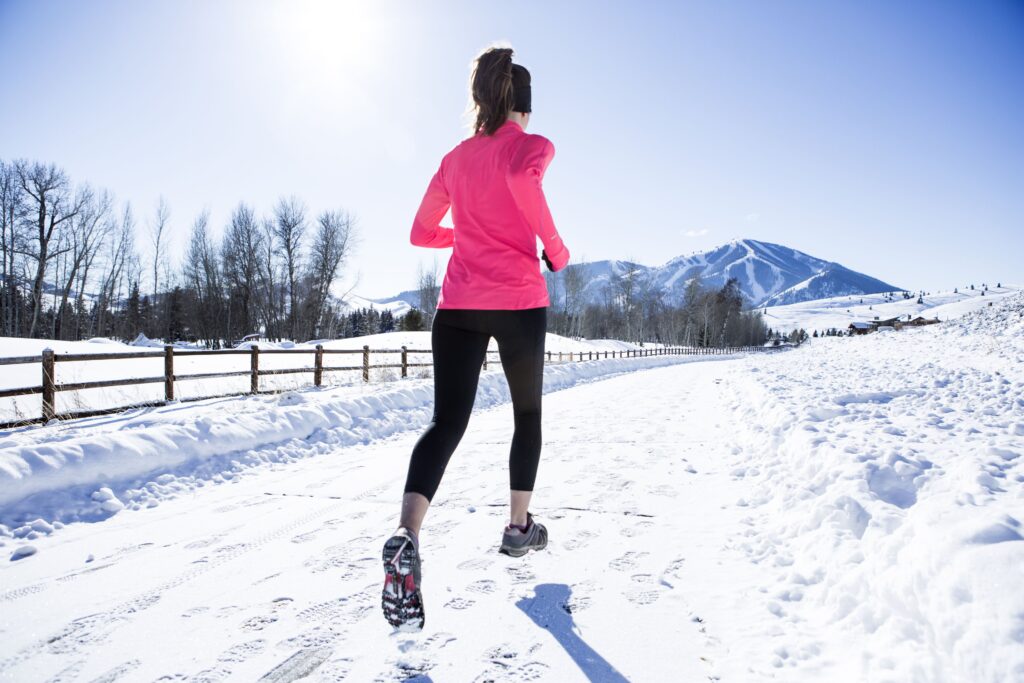Run in the winter period requires adapting your tempo, habits, wearing appropriate clothing and you might have to make some adaptations in your training in some cases. We are going to show you how you can organise your training the best way possible in winter conditions, as a solid winter training makes you both physically and mentally strong for the next season.
- Importance off warming up
A good warming up is important both for your lungs and your muscles. Start slowly and take your time for your muscles to get warm. This is especially important for easy runs, intervals, middle pace sessions and competitions. Run minimum 20 minutes for your warm-up.
- Controlled breathing
In low temperaturs our muscous membranes are generally irritated because we have a lack off fresh air, we spend a lot off time inside in warm and dry air. This increases the spread of germs, bacteria and viruses. This effect is reinforced by the cold air outside. At low temperatures is recommended to breath through your nose. Breathing through your nose, the air is cleaned, heated up to body temperature and saturated with water vapour. If the intensity is too high for you to breath through your nose adjust your speed run.
- Clothing
In the winter period is hard to find the motivation to get out and go running in the cold. But is important ton ow that that running in low temperatures stimulate the metabolism and the body gets fully active. Choose clothing that is close-fitting to the body, so that the amount of air between the skin and the material is reduced. We advice you the dress in three specifically layers:
First layer: the first layer wear clothes is important to prevent the sweat from evaporating on the skin, as this will make us cold. This way remains the body temperature constant because heat is retained and the skin stays dry.
Second layer: The second layer is useful for thermoregulation. Their function is to protect you the runner us from the cold and the weather.
Third layer: The third layer provides protection against rain, wind and moisture. Windproof and waterproof materials are the most suitable.
- Trousers
Compression running trousers (winter leggings) reduces the risk of injury (through reduced muscle oscillation), it increase the speed of recovery (through greater removal of lactate in the blood and a reduction in swelling).
- Hands, head, feet
By extreem weather conditions we recommend using winter running gloves, neck warmers and cap. If you don’t like running with a cap, you can opt for an ear muff. Don´t forget the importance off the safety in the dark: wear reflecting clothes, running vest and/or a head torch.
WHAT’S THE NEXT STEP?
If you want to now more about training duration, intensity and alternative training we will be ready to help you create a personal training program.

